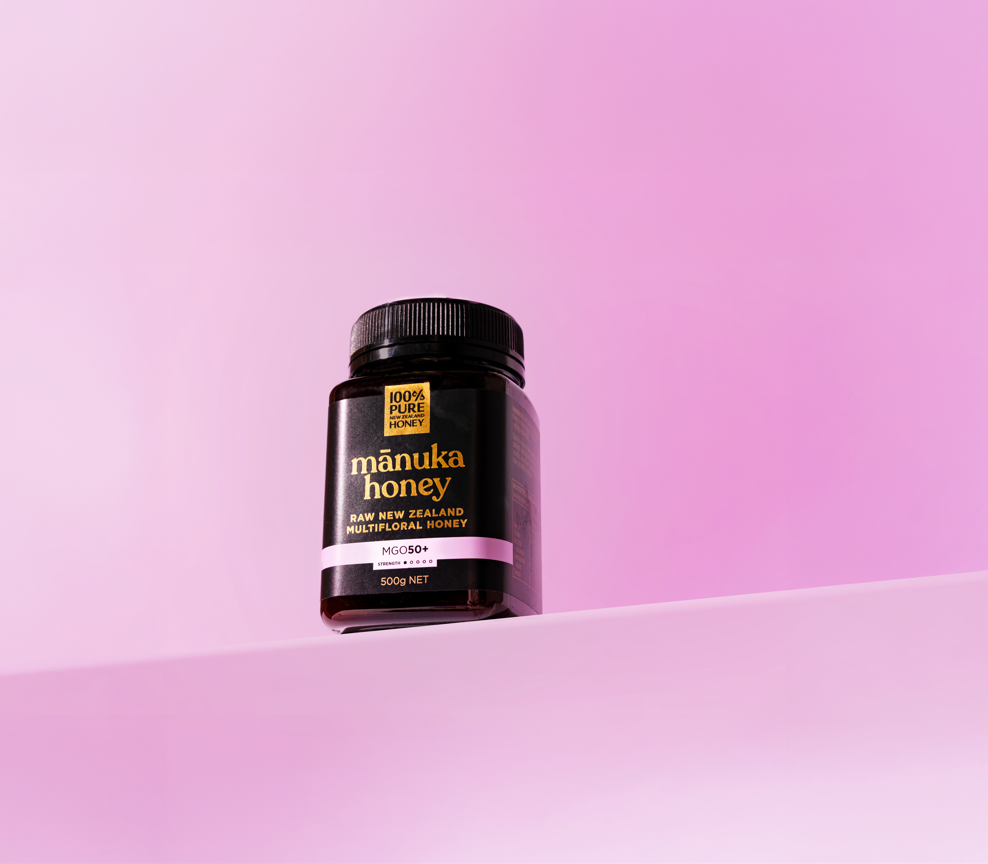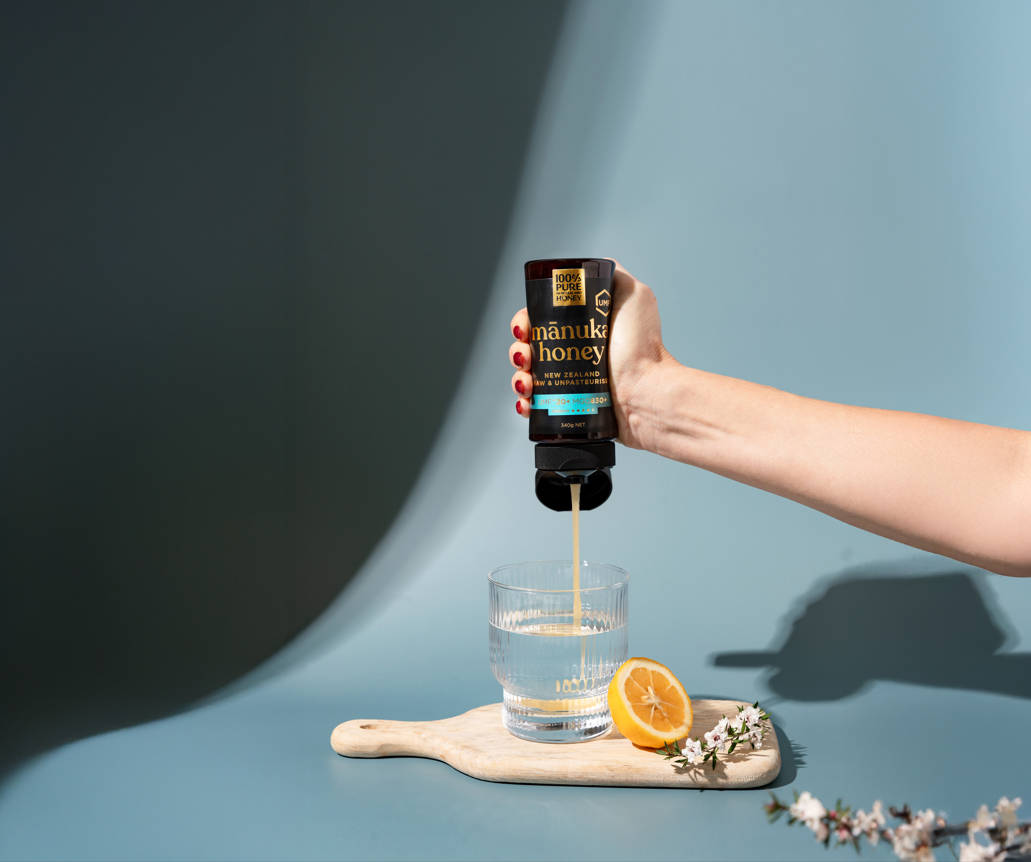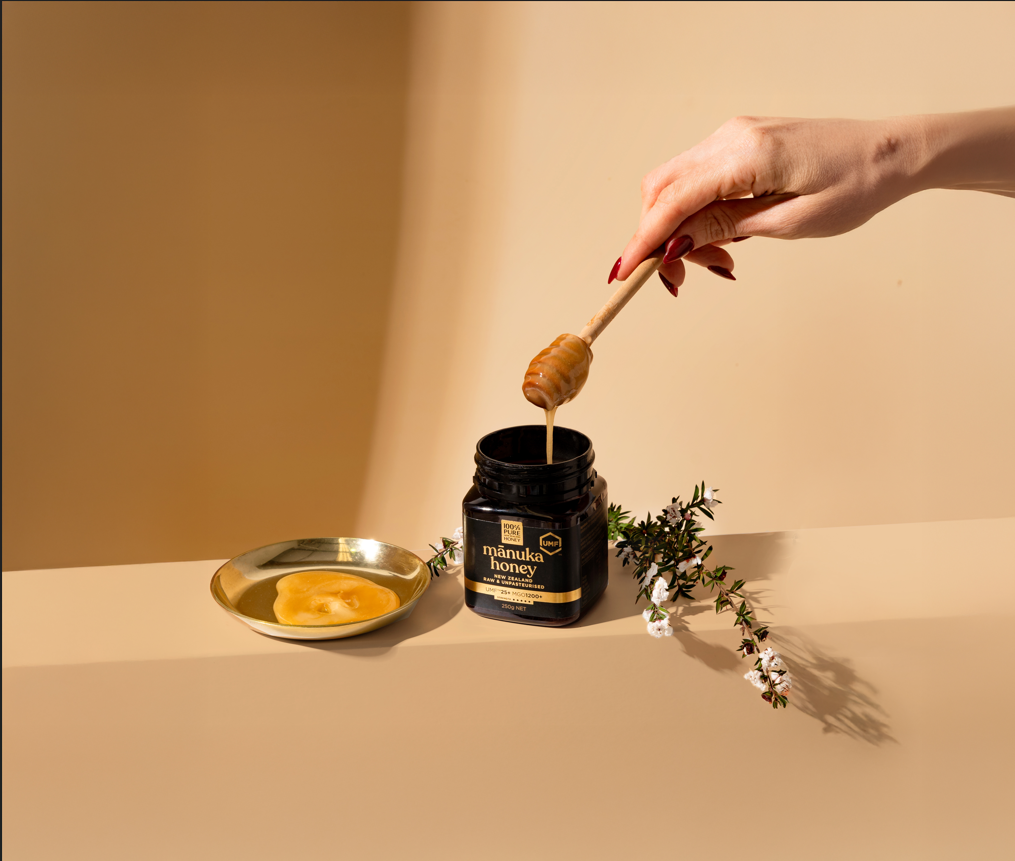UMF vs MGO: What’s the Difference?
When shopping for Mānuka honey, you’ve probably noticed two sets of letters on the label: UMF™ and MGO.
At first glance, they can be confusing — are they the same thing, or do they measure different qualities? The truth is, both are important, and together they give you the clearest picture of a honey’s strength and authenticity.
In this guide, we’ll break down what UMF™ and MGO mean, how they’re tested, and which one you should pay more attention to when buying.
What Does UMF™ Mean?
UMF™ stands for Unique Mānuka Factor. It’s a quality trademark and grading system developed in New Zealand to guarantee genuine Mānuka honey.
The UMF™ system measures a set of key compounds that define true Mānuka honey:
-
Methylglyoxal (MGO): The compound responsible for antibacterial strength.
-
Dihydroxyacetone (DHA): The precursor that converts into MGO over time.
Leptosperin: A natural marker unique to Mānuka nectar.
Each jar of UMF™ certified honey is independently tested in accredited labs, and the number (e.g., UMF™ 10+, UMF™ 20+) reflects the strength of these compounds.
👉 UMF Honey Association — the official body overseeing UMF™ certification.

What Does MGO Mean?
MGO stands for methylglyoxal, the compound that gives Mānuka honey its antibacterial power. It’s measured in milligrams per kilogram (mg/kg).
For example:
-
MGO 100+ = 100 mg/kg methylglyoxal
-
MGO 400+ = 400 mg/kg methylglyoxal
The higher the MGO number, the stronger the honey’s antibacterial properties.
UMF vs MGO: What’s the Difference?
Here’s the key distinction:
-
UMF™ is a comprehensive certification that measures multiple compounds and guarantees authenticity.
-
MGO is a single measurement that tells you how much methylglyoxal is in the honey.
Think of it this way:
-
MGO = one part of the picture
-
UMF™ = the full picture
That’s why serious producers (like us at 100% Pure New Zealand Honey) list both UMF™ and MGO on the label — so you get complete transparency.

Why Do Both Matter?
-
MGO is important because it’s the compound that delivers antibacterial activity.
-
UMF™ matters because it verifies not only the MGO but also the supporting compounds (DHA, leptosperin) that prove it’s genuine New Zealand Mānuka honey.
Without UMF™, you could technically have honey with added MGO that isn’t authentic. With UMF™, you know it’s the real thing.
Which Should You Choose?
If you want a quick understanding of strength, MGO is easy to read. If you want authenticity and trust, UMF™ is essential.
For example:
-
Everyday wellness: UMF™ 5+ / MGO 83+
-
Stronger immune support: UMF™ 15+ / MGO 514+
-
Therapeutic grade: UMF™ 20+ or higher / MGO 829+
Final Thoughts
When it comes to UMF vs MGO, the answer isn’t one or the other — it’s both. MGO tells you how strong your honey is, while UMF™ tells you it’s authentic, traceable, and certified.





